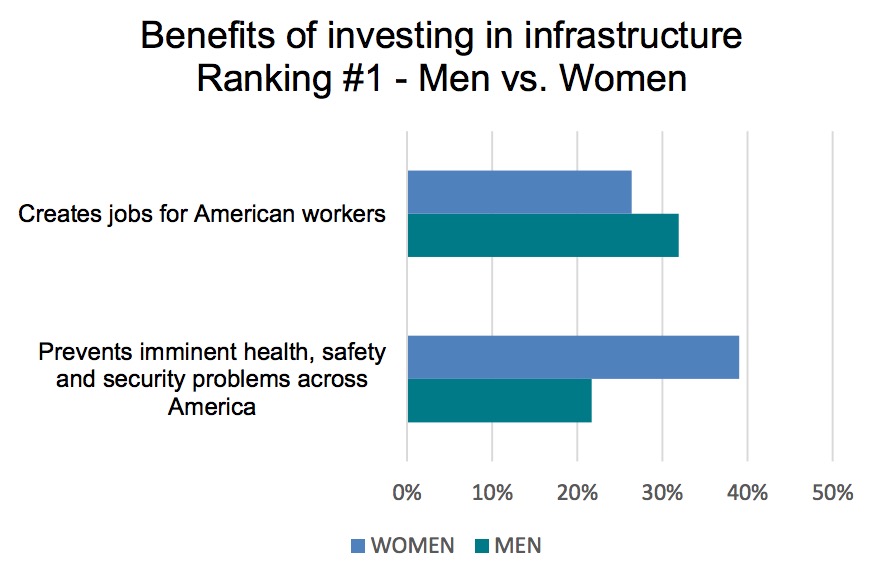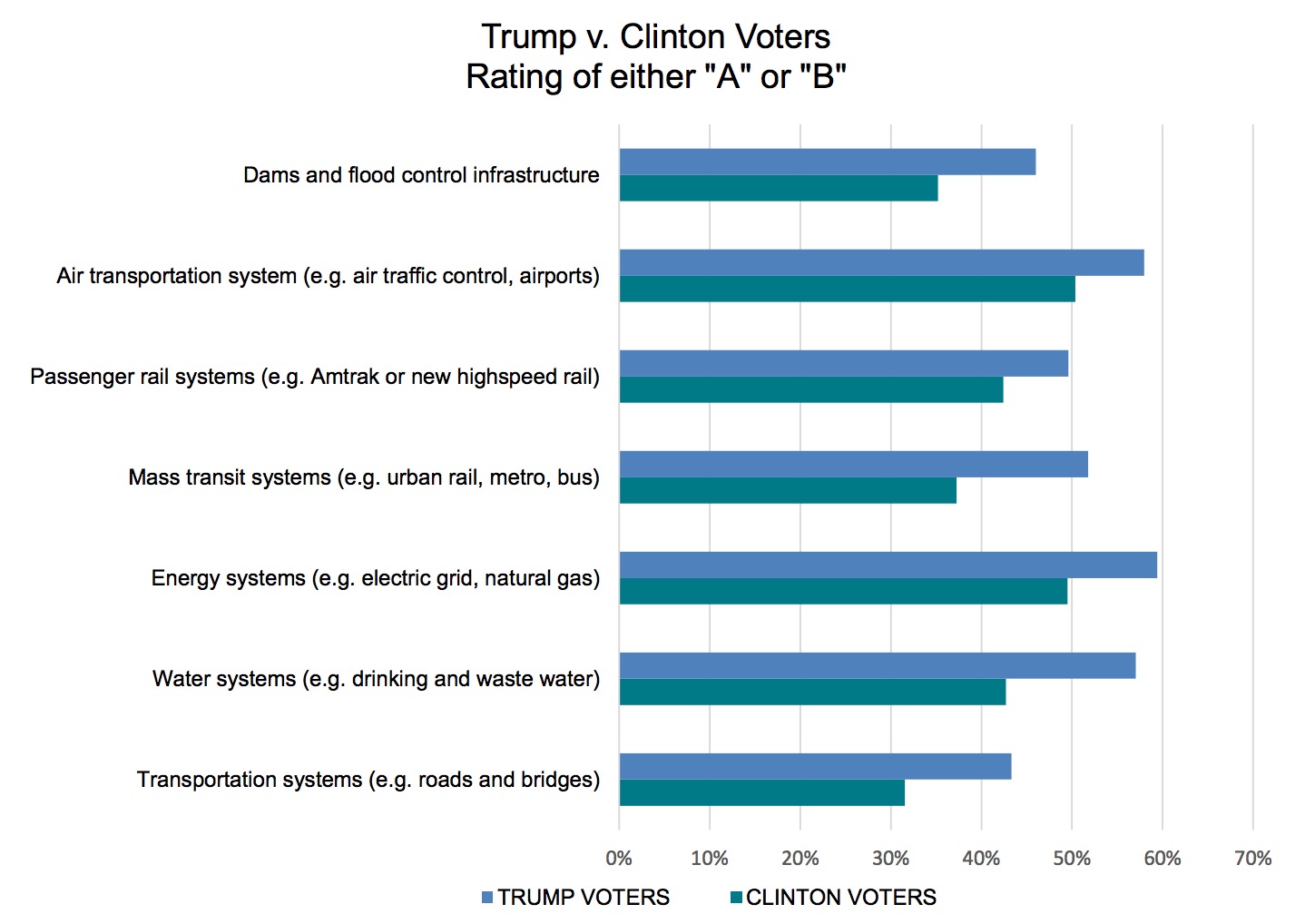BRODEUR PARTNERS
Brodeur Partners Relevance Series: Infrastructure
Our nation’s aging infrastructure.
We keep saying we’re going to do something about it.
But we don’t.
Rarely has a need with such bipartisan support gone under-funded for so long despite the diligent efforts of many organizations to break the logjam – from labor to business and even political and policy organizations on the right and left.
To support an effort on what is, perhaps, one of the biggest economic challenges facing this country, Brodeur Partners invested in a study of the American electorate. Our goal was to gain insight on what voters find relevant in the infrastructure discussion, along with ideas on how to move things forward.
The following are five insights gleaned from talking to American voters. It is our hope that this can help fuel interest, enthusiasm, and support for the much-needed investment in our nation’s infrastructure.
Educating the Public
Americans don’t appreciate the infrastructure problem
Our survey suggests that despite all the efforts to date, Americans still don’t appreciate how bad our infrastructure problems are
The American Society of Civil Engineers (ASCE) has kept a running tab on the health of our infrastructure with their annual U.S. Infrastructure Report Card. The reports have not been kind.
In its last report, ASCE rated 12 of the16 elements of the nation’s infrastructure with failing or “D” grades. Three got “C” or “mediocre” grades – bridges, ports, and solid waste systems. Only one got a “B” or “adequate” grade: freight rail.
Unfortunately, our survey suggests American voters “haven’t gotten the memo.”
We gave American voters a report card of their own to fill out, asking them to grade seven elements of U.S. infrastructure. Across all elements, large majorities of Americans gave them passing grades.
While over half (53%) of Americans give our air transportation and energy systems either an “A” or “B” grade, the ASCE gave these systems a “D” and “D+” respectively. Even the lowest scoring element – roads and bridges – was given an “A” or “B” grade by over one-third of voters.
Trump voters are much more sanguine about our nation’s infrastructure than Clinton voters. On every infrastructure element tested, Trump voters were more likely to rate these systems as either being “excellent” (A) or “good” (B) than those who voted for Clinton.
There are also age and income disparities. The older you are, the more likely you are to rate our infrastructure positively. The poorer you are, the more likely you are to rate our infrastructure poorly.
Align Priorities
Aligning infrastructure with voter priorities
In our survey, voters provided a clear set of priorities: water, energy and transportation.
Infrastructure covers a lot of territory. By definition, it encompasses all the necessary systems and structures that make business and civic life possible. So one of the early challenges for the government will be where to focus the investment given limited economic resources.
When asked to rank priorities, well over half (55%) said that the first or second most important priority was our drinking and waste water systems. The next most important priority was our energy systems including our electric grid and natural gas networks. A distant third was transportation including our roads and bridges.
The public’s priorities are largely bipartisan with two modest differences.
Trump voters put considerably more focus on upgrading our energy systems than Clinton voters. Nearly half (45%) of Trump voters felt energy was either the top or second most important priority. By contrast only a little over a quarter (26%) of Clinton voters felt the same way
There were other differences. Trump voters felt stronger about transportation than Clinton voters, while Clinton voters put more emphasis on water systems than Trump voters.
Two important things.
The data doesn’t suggest things like passenger rail, flood control, air transportation and mass transit systems are unimportant. Rather, they are saying that for them, based on what they know, these latter areas are not their top priorities.
In addition, as noted earlier, voters give our infrastructure much more positive grades than many of the experts do. Voters may have this wrong! But if they do, they are going to need more education and engagement to change their views.
Rethink Messaging
Are we correctly talking about the urgency around infrastructure?
The case for infrastructure typically focuses on productivity and jobs. Improved infrastructure means greater efficiencies, greater access to improved technologies and an overall more efficient and productive economy. By investing in infrastructure we also create jobs – particularly well-paying blue collar jobs America is in sore need of. This, in turn can boost overall growth in the economy.
But there is a message that is missing: public health and safety.
In our study, health, safety and security was the top ranking benefit compared to four other benefits, including jobs and economic competitiveness.
 We’ve seen bridges collapse, water systems contaminated and dams fail. But the health and safety benefits of infrastructure investment don’t appear to be as prominent in messaging than things like productivity, jobs and financing.
We’ve seen bridges collapse, water systems contaminated and dams fail. But the health and safety benefits of infrastructure investment don’t appear to be as prominent in messaging than things like productivity, jobs and financing.
The opportunity for advocates of infrastructure is to go beyond the economic benefits and show how investments now can improve health, prevent accidents and save the lives of family, friends and their communities in the future.
While the pattern of infrastructure investment benefits largely held along political lines, there were modest differences between Trump and Clinton voters.
Clinton voters responded much more strongly to the health, safety and security benefits, while Trump voters responded more positively to the benefits of improved quality of life and business competitiveness.
The BIG difference here was gender. Women were twice as likely as men to put health, safety and security as their top benefit.
For men, jobs were the number one benefit with security a distant second.
Download full version (PDF): Making Infrastructure Investment Relevant Again
About Brodeur Partners
www.brodeur.com
“Our company, approach and people are centered on helping clients become—and remain—relevant in an increasingly noisy and turbulent environment. Relevance moves people from passive to involved and compels us to act. Conventional communication agencies work to change minds – what people think. At Brodeur Partners, we change behaviors – what people do. We deliver transformative ideas that move people from disengaged to engaged, from waiting to involved, from curious to committed, from sitting on the sidelines to joining in, from not spending money to buying, from apathy to outright passion.”
Tags: Brodeur Partners, Public Safety, Relevance, survey








 RSS Feed
RSS Feed